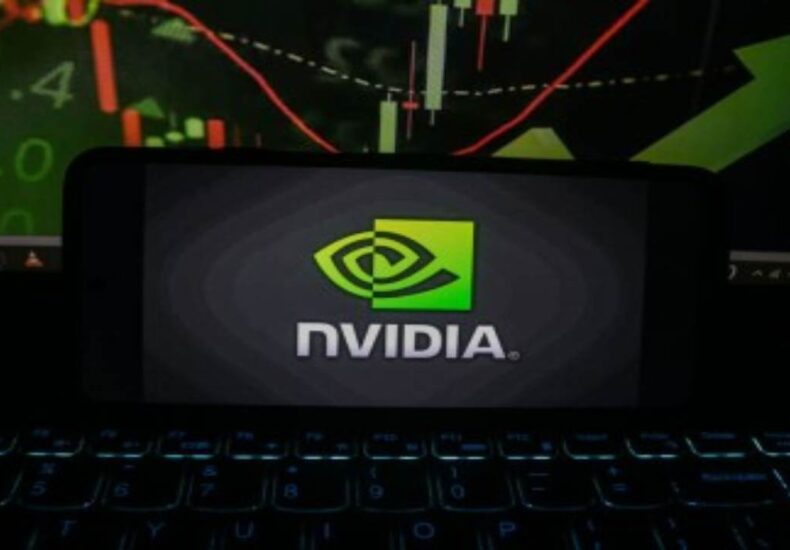
Nvidia Strong Performance Tries to Calm Rising Fears
Fundacion Rapala – The world’s largest chipmaker surprised the market when Nvidia reported earnings that beat every expectation. The numbers were huge, and CEO Jensen Huang said sales were “off the charts.” Yet the reaction did not match the excitement. Concerns about an AI bubble kept growing, even as Nvidia showed more than 60% year-on-year growth. Many investors hoped these results would silence the doubts, but it was not enough. Nvidia’s shares slipped again, sending a message that the wider market still feels nervous. This tension created an emotional moment for analysts and everyday investors who want clarity about AI’s future. Nvidia tried to reassure them, but the world is still unsure how fast this revolution should move.
Why Nvidia Believes the AI Boom Still Has a Long Future
Nvidia leaders pushed back against bubble fears in a confident and clear way. CFO Colette Kress shared projections showing $3 to $4 trillion in annual AI infrastructure spending by the end of the decade. She said current demand keeps beating expectations and shows no sign of slowing. Jensen Huang added that companies need massive computing power to run both AI tools and existing cloud systems. He explained that much of today’s non-AI software also depends on Nvidia’s GPUs, making the company’s role much larger than many people think. Their message felt warm and steady, like they were trying to calm a worried crowd and remind everyone that the AI wave is still rising.
“Read More : How Meta’s WorldGen Is Transforming the Future of Interactive 3D Worlds“
Evidence That Big Tech Still Leans Heavily on Nvidia
During the earnings call, Nvidia leaders shared examples from their partners to highlight real progress. Meta saw more engagement on Facebook and Threads because of AI-powered recommendations. Salesforce reported a 30% boost in engineering efficiency after using AI for coding. Anthropic expects $7 billion in annual revenue this year alone. These numbers showed that AI is not just hype. Companies are using it to reach more users and save more time. For investors who follow these details closely, this update offered hope. It showed that the demand for AI tools is broad, practical, and already woven into daily digital life. Nvidia wanted people to feel that this shift is not temporary it is global and ongoing.
Analysts Split Between Caution and Confidence
While many analysts share Nvidia’s optimism, others still struggle to trust the long-term path. Morningstar’s Brian Colello said he does not see any clear signs of weakness for 2026 and views the fear-driven stock dip as a buying opportunity. Wedbush analyst Dan Ives also showed strong confidence. He called this moment “Year 3 of a 10-year build-out,” comparing the AI shift to the next industrial revolution. These comments created an emotional lift for investors who want to believe in AI’s future. Yet caution remained because the market is tired of promises and wants long-term proof. Hope and doubt now sit side by side, shaping how people read the next headline.
“Read More : ChatGPT Group Chats: A New Way Teams Connect“
Why Wall Street Still Can’t Relax Despite Positive Signals
Even with bright numbers, Wall Street remains tense. Some experts worry that Big Tech might slow down its massive spending on AI. This fear grew stronger after OpenAI’s CFO suggested the government might need to support debt tied to AI infrastructure. The comment made people wonder if even the biggest AI firms feel financial pressure. Nvidia has also invested in unprofitable partners like OpenAI and Anthropic, which adds more questions. If these companies struggle later, investors fear the impact could spread across the industry. The market is not doubting Nvidia’s strength it is worrying about the fragile ecosystem around it. That uncertainty keeps many people awake at night.
The Emotional Uncertainty Behind the AI Boom
Daniel Morgan from Synovus Trust said many concerns were not solved by Nvidia’s strong report. Instead, they were delayed to the next quarter. His words capture how the market feels right now uncertain, hopeful, and nervous all at once. AI is moving fast, and nobody wants to miss the opportunity. But they also fear the cost of chasing a dream too quickly. Nvidia now carries the responsibility of proving that this moment is a boom, not a bubble. The company’s steady voice encourages patience, but global markets still hesitate. Investors want reassurance not only from numbers but from stability. Until that arrives, the world will keep watching Nvidia’s every move.